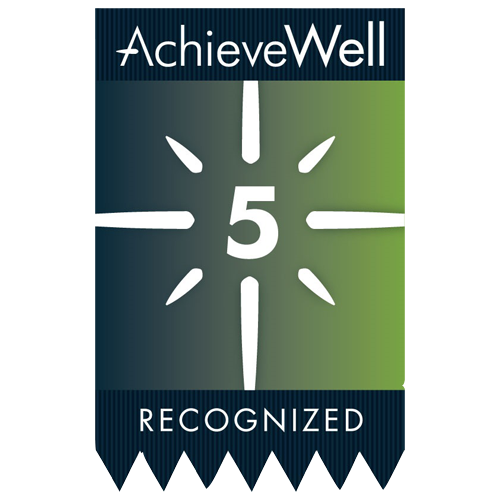ACA: Key Terms
A “full-time” employee means, with respect to any month, an employee who is employed on average at least 30 hours of service per week. 130 hours of service in a calendar month is treated as the monthly equivalent of at least 30 hours of service per week.
“Hours of service” generally means each hour for which an employee is paid, or entitled to payment, for the performance of duties for the employer; and each hour for which an employee is paid, or entitled to payment by the employer for a period during which no duties are performed due to vacation, holiday, illness, incapacity (including disability), layoff, jury duty, military duty or leave of absence. “Hours of service” generally does not include bona fide volunteers, work-study programs, and services outside the United States.
“Minimum essential coverage” (“MEC”) includes coverage under an eligible employer-sponsored plan.
An “eligible employer-sponsored plan” includes a group health plan or group health insurance coverage offered by an employer which provides an essential health benefits package.
An “essential health benefits package” generally means coverage for benefits in 10 categories that limits cost-sharing for the coverage.
Who is an ALE?
Based on the calendar year; If an employer has 50 or more full-time employees, including full-time equivalent employees, on average during the prior calendar year, the employer is an ALE for the current calendar year. To determine employee population, add total full-time employees and FTEs for each month of prior calendar year and divide by 12.
Example: Employer has 38 FTEs in each of January, February, March, April, May and June. Employer has 56 FTEs the rest of the year. The employer is NOT an ALE (38*6 + 56*6= 564 / 12 = 47 FTEs)
A full-time employee for any month is an employee who has an average of at least 30 hours of service per week or at least 130 hours of service during the month. A full-time equivalent employee is a combination of employees, each of whom is not a full-time employee, but who in combination are equivalent to a full-time employee.
Example: Combine the hours of service of all non-full-time employees for the month (up to 120 hours per employee) and divide the total by 120.
FTEs are only relevant to determine ALE status – no obligation to offer coverage to any FTEs.
What Does It Mean To Be an ALE?
Two provisions of the ACA apply to ALEs:
- The employer shared responsibility provisions (a.k.a. “Pay or Play”)
- The employer information reporting requirements (1094s and 1095s)
Two different requirements and penalties:
- § 4980H(a): No offer of health coverage
- § 4980H(b): Offer of health coverage that does not meet specified requirements
Code § 4980H(a)
It applies if an ALE fails to offer its full-time employees (and their dependents) the opportunity to enroll in MEC under an employer-sponsored plan for any month, AND At least one full-time employee is certified as having enrolled for such month in a qualified health plan through an Exchange, AND Such individual receives a premium tax credit.
ALE is treated as offering MEC under an eligible employer-sponsored plan to its full-time employees (and dependents) for a calendar month if, for that month, it offers such coverage to all but 5% (or five, if greater) of its full-time employees. Employees in a limited non-assessment period are excluded from number of “full-time employees.”
Code § 4980H(a) Penalty
The “a” penalty for a month is:
- “Applicable payment amount,” multiplied by
- Number of full-time employees employed during the month, less 30.
- “Applicable payment amount” (2024) is 1/12 of $2,970 ($247.50).
Code § 4980H(b)
Applies if ALE offers full-time employees (and their dependents) the opportunity to enroll in MEC under an eligible employer-sponsored plan for any month, AND at least one full-time employee is certified as having enrolled for such month in a qualified health plan through an Exchange, AND such individual receives a premium tax credit.
Employees in a limited non-assessment period excluded from number of “full-time employees.” Employees who were offered MEC under an eligible employer-sponsored plan that provides minimum value and meets an affordability safe harbor are excluded from number of “full-time employees.”
Conditions for Using Affordability Safe Harbors: ALE must offer full-time employees (and dependents) opportunity to enroll in MEC under an eligible employer-sponsored plan that provides minimum value. ALE may choose to apply the safe harbors for any reasonable category of employees, provided it does so on a uniform and consistent basis for all employees in a category.
Treasury Regulations create affordability safe harbors.If offered coverage is not “affordable,” an employee can be eligible for a premium tax credit or cost-sharing reduction. If ALE offers MEC that provides minimum value and satisfies one of the affordability safe harbors, the ALE is not subject to the “b” penalty. Use of safe harbors is optional.
Form W-2 Safe Harbor: Employee’s required contribution for calendar year for lowest cost self-only minimum value coverage does not exceed 8.39% of the employee’s Form W-2 wages. Employee’s required contribution must remain a consistent amount or percentage of all Form W-2 wages during the calendar year.
Rate of Pay Safe Harbor: For an hourly employee, the safe harbor is satisfied for a month if the employee’s contribution for the month for the ALE’s lowest cost self-only minimum value coverage does not exceed 8.39% of: 130, multiplied by
lower of (i) employee’s hourly rate of pay as of the first day of the coverage period, or (ii) employee’s lowest hourly rate of pay during the calendar year.
Federal Poverty Line Safe Harbor: Employee’s required contribution for the calendar month for lowest cost self-only minimum value coverage does not exceed 8.39% of a monthly amount determined as the federal poverty line for a single individual for the calendar year, divided by 12. The 2024 federal poverty line for a single individual is $14,580.
Code § 4980H(b) Penalty
The “b” penalty for the month is:
- Number of full-time employees receiving subsidized Exchange coverage for such month, multiplied by
- For 2024: 1/12 of $4,460 ($371.67)
The aggregate amount of the “b” penalty for any month cannot exceed the applicable payment amount ($247.50) multiplied by the number of full-time employees for the month.
ACA Reporting Requirements
- Code § 6055: Requires reporting if a person provides MEC.
- Code § 6056: Requires reporting by ALEs subject to the “employer mandate.”
- Forms are furnished to specified individuals and filed with the IRS.
- Forms used for reporting depend on the type of coverage.
- Self-insured plans
- Code §§ 6055 and 6056 reporting combined.
- Specified individuals receive Form 1095-C.
- Forms 1095-C filed with IRS using Form 1094-C.
- Fully-insured plans
- Insurer files/furnishes Forms 1094-B and 1095-B.
- Employer files/furnishes Forms 1094-C and 1095-C. Only certain portions of Form 1095-C are completed.
Typical deadline is January 31, however IRS finalized a permanent automatic 30 day extension.
- March 31, 2024 deadline for 1095-C to individuals
- April 1, 2024 deadline to electronically file 1094-C (with copies of 1095-Cs) with IRS.
- Beginning in 2024, 1094-C and 1095-C must be filed electronically.
ACA Reporting Penalties
- Failure to file penalty is $310 for each return (max penalty of $3,783,000 per year).
- Failure to provide employee with 1095-C is $310 for each form (max penalty of $3,783,000 per year).
- Penalty increases to $630 per form (with no max) if IRS finds employer intentionally failed to file.
- IRS will reduce penalties if corrected quickly (within 30 days down to $60 or by August 1 down to $120).
“Reasonable Cause” relief may be available.
Preparing for ALE Status
If an entity may be close to being an ALE, consider the following:
- Can it adjust the number of employees or employees’ hours of service to avoid being an ALE?
- Will it be able to offer coverage tofull-time employees and their dependents when it becomes an ALE?
- Will that coverage be “affordable”?
- Know the deadlines for filing/furnishing applicable forms (e.g., Forms 1094-C/ 1095-C)
- Confirm who will prepare, file, and furnish the reporting forms.
Controlled Groups and M&A
Some businesses are so closely connected that they are treated as a single employer for various purposes under federal tax law.
One type of such relationship is a “controlled group”:
- Parent-subsidiary controlled group.
- Brother-sister controlled group.
- A combined group.
Another type of relationship is an “affiliated service group.” Complex rules determine whether entities are part of a controlled group or an affiliated service group.
Why Ownership Matters Under the ACA
All employees of all the entities that are part of the controlled group or an affiliated service group are counted to determine whether the entities are ALEs.
An entity may not, on its own, meet the 50 full-time employee headcount to be an ALE, but may be an ALE when all the employees of all the members of the controlled group or affiliated service group are counted. ALE status is determined by looking at the number of full-time employees and full-time equivalents in the prior calendar year.
If the entities are ALEs, then the offer of coverage and reporting rules apply to each entity.
M&A Considerations
An M&A transaction may result in an ALE post-closing. Due diligence is important. For example:
- Are the parties currently ALEs?
- What offers of coverage were made?
- Were reporting forms properly filed/furnished?
- Are there any outstanding or potential ESRPs?
- Are there any outstanding or potential penalties for failing to file/furnish reporting forms or not filing/furnishing them by the deadlines?
Transaction documents should address ACA issues.





